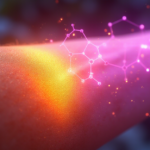The Chemistry of Sunlight: How Solar Energy Drives Life on Earth

Researching photochemistry, I have seen the amazing ways sunlight fuels chemical reactions vital for life on Earth. Solar energy’s chemistry covers everything from photosynthesis to atmospheric reactions forming our climate. By means of my research on light-driven chemical processes, I have investigated how various molecules grab and convert solar energy into practical forms. The basic ...
Read More









